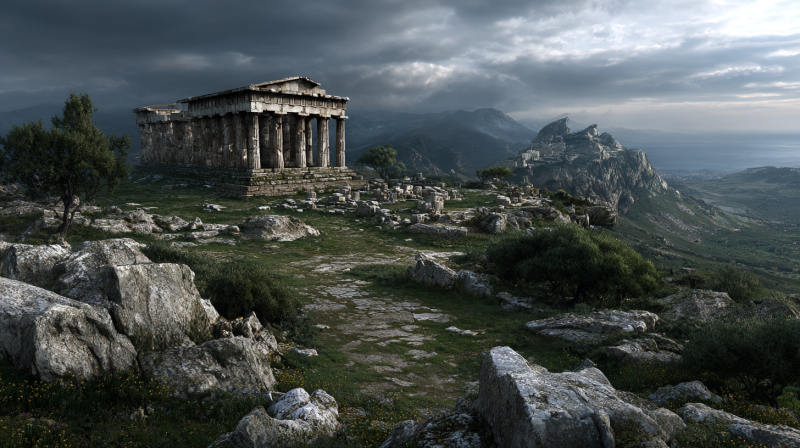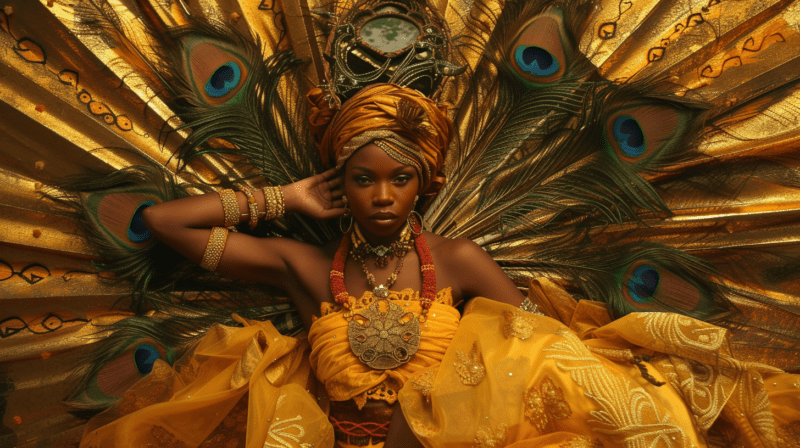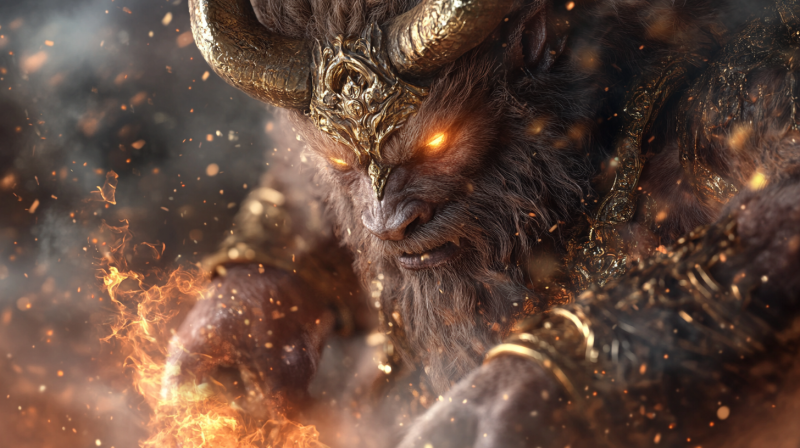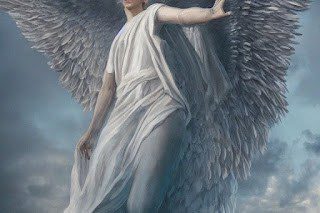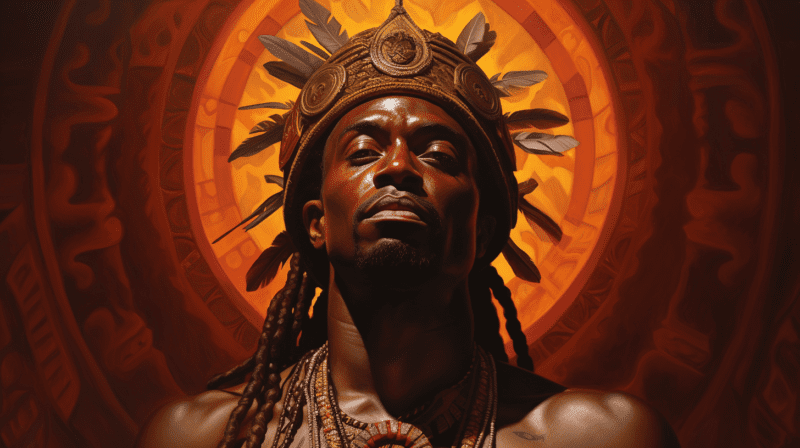The Sky God of Egypt
Ancient Egyptian mythology gives the name Horus to a sky god who generally refers to two gods: Horus the Elder (or Horus the Great), the last of the original five gods to be born, and Horus the Younger, the son of Osiris and Isis.
Jimmy Dunn, a historian, claims, “The most significant of the avian deities is Horus, who appears in so many different ways and is portrayed so differently in different inscriptions that it is practically difficult to tell who the real Horus is.” Most often, the name Horus refers to various falcon gods. Even though this is definitely true, the word “Horus” is usually used to mean either the oldest of the first five gods or the son of Isis and Osiris who beat his uncle Set and brought peace to the country.
The name Horus is an adaptation of the Egyptian Hor, which refers to him as a sky god and means “the Distant One” in Latin. Horus the Great in English, or Harwer and Haroeris in Egyptian, refers to the older Horus, the brother of Osiris, Isis, Set, and Nephthys. After Alexander the Great conquered Egypt in 331 BCE, Horus the Child (Hor pa khered), the son of Osiris and Isis, was changed into the Greek god Harpocrates. The name “Harpocrates” also means “Horus the Child,” although the god was not the same as Horus of Egypt. The Greek God of Silence, Confidentiality, and the Guardian of Secrets, Harpocrates, is frequently shown in statues as a winged kid with his finger to his lips.
On the other hand, Horus the Younger was a strong sky deity who was primarily linked to the sun but also the moon. He served as the protector of the Egyptian royal family, the just judge, the upholder of the law, the unifier of the two lands, and, thanks to his conflicts with Set, a god of war who Egyptian kings frequently invoked both before and after the battle. Ra-Harahkhte, the sun god who sailed through the sky during the day and was shown as a falcon-headed man wearing the double crown of Upper and Lower Egypt with the sun disk on it, was eventually created when he was joined with the sun god Ra. His emblems are the falcon and the Eye of Horus, two of the most well-known Egyptian symbols.
Horus: the Elder
Soon after the universe first began to exist, Geb (earth) and Nut (sky) came together to create Horus the Elder, one of the earliest Egyptian deities. Horus was put in charge of the sky and, more specifically, the sun. His older brother, Osiris, was put in charge of the earth with Isis. In one version of the tale, Hathor is the mother of Horus; in other versions, she is his wife; and in still other versions, she is the mother, wife, and daughter of Horus. Geraldine Pinch, an academic, says that a falcon in a barque is one of the oldest ways to show that Horus is traveling through the heavens on the sun barge. In addition, Horus is portrayed as a generous protector and creator god.
The Egyptian god Horus slowly took on the traits of several falcon gods, who were also called avian deities. Some, like the Upper Egyptian Dunanwi, were talked about very early in history, while others, like the Montu, became popular much later. Even though historians have argued about Horus’s early ties to Dunanwi, the god’s combination with him, Horus-Anubis, is a fact. Horus was worshipped all over the country, but Dunanwi was only worshipped in the 18th higher nome (province). Though it’s possible that Horus, like Inanna in Mesopotamia, began as a regional deity like Dunanwi, it seems more likely that the whole of Horus emerged early in Egypt’s religious evolution.
Horus: the Younger
Although the younger Horus was once thought to be connected to the older god, he quickly overcame him and adopted many of his traits. By the time of the Ptolemaic Dynasty (323–30 BCE), the last dynasty to rule Egypt, the younger Horus had completely replaced the elder Horus. Horus the Child statues from the time of the Ptolemies show him as a little boy with his finger to his lips. This may have been to show that he had to be quiet when he was hiding from his uncle Set. In his child form, he “came to represent a promise by the gods to look for suffering people” because he had been hurt as a child and knew what it was like to be weak and surrounded by dangers. The Greek Harpocrates, whom Plutarch referred to as “the second son of Isis,” was a manifestation of Horus that would later gain renown in the Roman world. In ancient Roman art, Harpocrates and his mother are shown as the divine son and mother. The Cult of Isis was the most popular mystery cult in Rome, and it had a big impact on the development of Christianity.
Horus, like all Egyptian gods, was revered in the temples that served as his residence. His statue was put in the inner sanctum, where only the highest priest was allowed to go. Because they identified with Horus and asserted that he was their protector from their “mother,” Isis, the clergy of the Horus Cult were always men. Priests took care of the temple complex, which they decorated to resemble the afterlife in the Field of Reeds, just like any other building. The souls of the justly deceased were transported across Lily Lake, also known as The Lake of Flowers, by the heavenly ferryman Hraf-hef (also known as “He Who Looks Behind Himself”). Lily Lake served as the temple’s reflecting pool. The god’s garden and place to live in the afterlife were in the flower-filled courtyard.
Egyptians would come to the courtyard to deliver donations, ask for help, collect alms, or have their dreams explained. In addition, they would go to the temple for guidance, omen interpretation, medical care, marital counseling, and defense against ghosts or evil spirits. The places of worship for Horus, as noted by Wilkinson above, are too numerous to enumerate, but the main foci of the cult were Khem in the Delta region, where Horus was hidden as a child; Pe, the location where Horus lost an eye in his conflict with Set; and Behdet (both also in the Delta). At Edfu and Kom Ombos in Upper Egypt, he was revered with Hathor and their child, Harsomptus. The yearly Coronation of the Sacred Falcon was held in Edfu, and it “united the old falcon deity with his form as Horus, son of Osiris, and with the king” by choosing an actual falcon to represent the god as king of all Egypt. Although not as significant as the Heb Sed Festival, this ceremony, like other royal festivals, had to do with the king’s empowerment and the renewal of his rule. At Abu Simbel, statues, inscriptions, and amulets all served to honor Horus, who was also revered for his protection.

